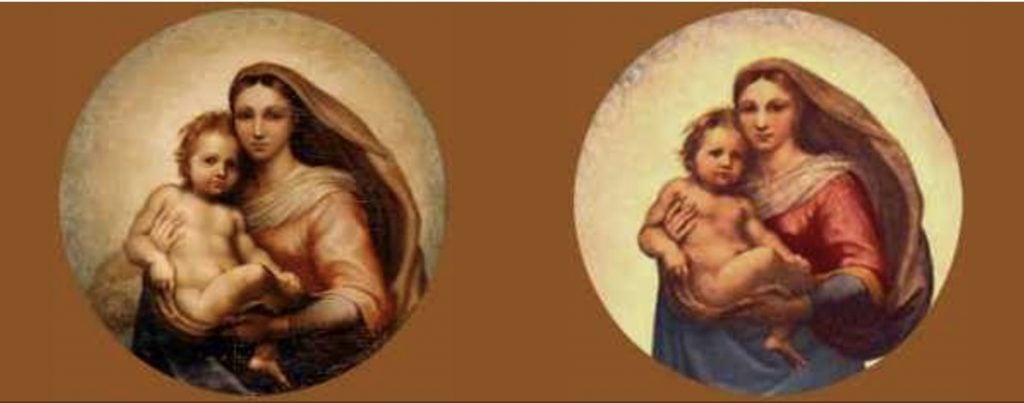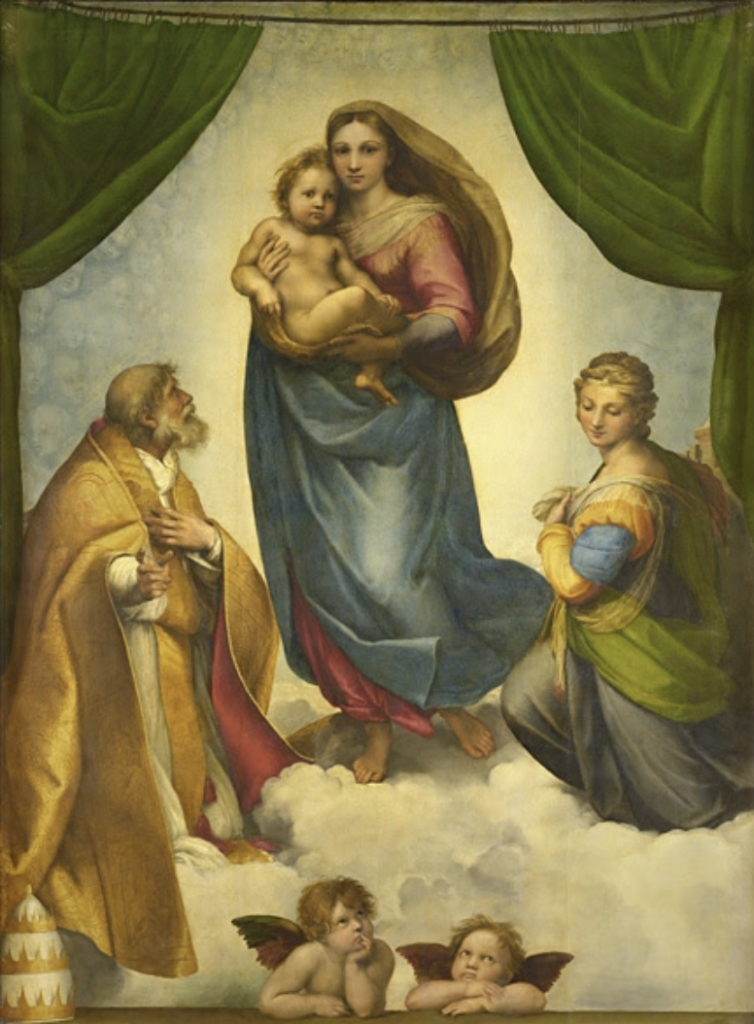Art & Tech
A Painting Newly Attributed to Raphael by A.I. Facial Recognition Goes on View for the First Time
The painting, long dismissed as a Victorian copy of Raphael's famed 'Sistine Madonna,' has never been on public display before.

The painting, long dismissed as a Victorian copy of Raphael's famed 'Sistine Madonna,' has never been on public display before.

Sarah Cascone

A painting of the Madonna and child is on view in the U.K. city of Bradford, in West Yorkshire, with a fancy new attribution. Research teams from the University of Nottingham and University of Bradford analyzed the work using new A.I.-powered facial recognition technology and determined it was by the hand of Italian Renaissance master Raphael.
“Testing the Tondo using this new A.I. model has shown startling results, confirming it is most likely by Raphael,” Hassan Ugail, director of the center of visual computing at the University of Nottingham, told the BBC. “Together with my previous work using facial recognition, and combined with previous research by my fellow academics, we have concluded the Tondo and the Sistine Madonna are undoubtedly by the same artist.”
The two-month exhibition at Cartwright Hall Art Gallery is the first public display for the de Brécy Tondo, as the work is known. It’s named after the de Brécy Trust Collection, amassed by the late British art collector George Lester Winward, who purchased it in 1981 at a country-house sale in England, and long suspected it to be the work of Raphael.
The circular painting bears a noted resemblance to Raphael’s Sistine Madonna (1512–13), an altarpiece from the collection of the Gemäldegalerie Alte Meister at the Dresden State Art Museums famed for the two putti, or baby angels, below the Virgin Mary.

Raphael, Sistine Madonna (1512–13). Collection of the Gemäldegalerie Alte Meister at the Dresden State Art Museums.
But experts had previously determined the work was a Victorian-era copy of the more famous masterpiece—and not everyone is convince by A.I. findings that have suggested otherwise.
“I have never seen the piece in person but judging from the photograph it would appear to be a copy after Raphael,” Italian drawings researcher Angelamaria Aceto, of the Ashmolean Museum in Oxford, told the Art Newspaper. “While I am always open to the use of new technologies and approaches, I would not support an assessment of authenticity that relies on A.I. True connoisseurship relates to the expert judgment of the trained eye and is so much more than mechanically matching brushstrokes and images.”
The researchers, on the other hand, are confident that their work proves Raphael’s authorship.

A.I.-power facial recognition technology has identified the previously unattributed de Brécy Tondo painting as the work of Raphael. Photo courtesy of the de Brécy Tondo Trust.
Comparing the faces of the Madonnas in the two paintings, A.I. found a 97 percent similarity, and an 87 percent resemblance for the baby Jesus in both works. Anything over 75 percent is such a high statistical probability to be considered identical.
And A.I. isn’t the only evidence in favor of a Raphael attribution. Analysis of the pigments in the tondo by the De Brécy Trust, founded by Winward in 1995, two years before his death, found that the materials were consistent with Renaissance-era paintings.